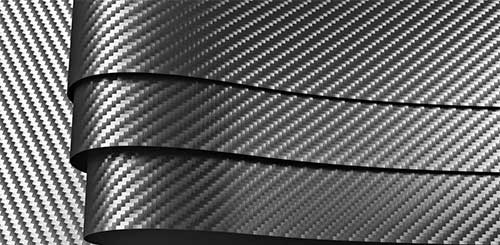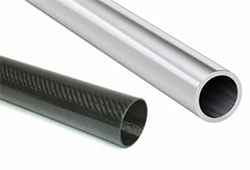
I have two clients at roughly the same point in their respective programs. They have both successfully completed a multi-year prototyping phase, they are zeroing in on a realistic and viable production configuration and they are both looking at the best way to get through the minefield of production R&D, certification, volume manufacturing setup, commercial operations and finally revenue.
This planning phase is critical to the success of their programs and both have very good people involved in advising them and creating their plans.
The same critical issue has come upon both programs. I will not divulge how each program has selected to deal with this issue, but this is a little known problem with composite aircraft development programs. It is a ‘sink or swim’ issue, but then so many issues are when it comes to aircraft development and survival of the project or company.
One of the critical aspects that separate metallic aircraft certification and development programs and composite programs is the lack of accepted production and quality methodologies for the latter.
Metal materials science, supply chain, storage, handling, processing, corrosion protection, etc is very well understood and is governed by a set of largely public domain standards that are easy to access for anyone and accepted internationally by all national aircraft regulators.
The same is not true of composites.
This has a number of critical impacts on composite aircraft programs. All of these impacts are well understood but some are not widely known about. These can come as a set of unpleasant surprises to project management.
As there are no comprehensive public standards available that govern the use of composite materials each OEM has to develop their own internal standards. These standards have to cover all of the same activities as the well known and ‘taken for granted’ standards for metals, These are enshrined is what is usually referred to as a set of process specifications (how do I do it?) and a set of of quality procedures or quality standards (how do I make sure that I have done it right?),
This set of documentation inside each company dealing with composites all look more or less the same. But each company has to take on the task of developing them in a largely independent manner. There are shortcuts you can take, you can buy a composite manufacturing organization that already has the standards established or you can hire an engineer or a team out of another composites OEM to write them for you.
However, there is another path you can take.
You can partner with a manufacturing organization that will ‘build to print’ your designs. If they have an existing set of mature systems already used for the manufacture of certified aircraft structures then they can use those processes for you.
Well……yes….and here comes the ‘but’.
This is where things get messy and difficult.
When you qualify a metallic primary structure installation you do the MMPDS (Mil-Hndbk 5 – or whatever your approval local equivalent is) and you extract the material strength and stiffness characteristics from that reference.
Metallic materials also have relatively simply metrics for stiffness characteristics and for failure modes so a single page in MMPDS can contain the useful data for a range of different thicknesses for a single temper of aluminum. Or even the information for a set of different tempers of aluminum.

There is no equivalency between the public domain nature of the data for metal materials or the type of characteristic data used for the qualification of composite structures.
The data used for qualification of composite structures has to all be developed by the OEM. It is true that there are some baseline material characteristic databases available (AGATE, NCAMP) but the OEM still has to prove equivalency to these material datasets using their company process and quality systems and these datasets only equate to the first level of the composite building block qualification process.
All of these tests, whether to establish the baseline material datasets or to show equivalency (and all the other testing within the building block approach) all have to be done under the OEMs own proprietary process control and quality systems.
The basic material characteristics, the strength of panels and other features, the strength and durability of subassemblies and major assemblies are all certified using test articles built using the process and quality systems you develop.
The type certification of the design of your composite structure has your manufacturing processes and quality system hard-baked into it. In the same way the type certification of the design of your metallic structure has AMS materials standards, NAS and MIL specifications and MMPDS material data baked in.
If you are a composite aircraft startup and you don’t want to take on the significant task of developing or acquiring your own internal manufacturing processes and quality systems upfront, what are the options?
As mentioned previously you can work with a company with their own system who can also be a manufacturing partner. If you do this and you use their systems in your type design program you bake another company’s process control and quality system into your certified type design.
If you chose to work with several companies, for example you could split the wings, the fuselage and the empennage between three different qualified composite suppliers, you will have three different process control and quality systems built into your certified type design.
How do you manage this at a contractual level? You have to negotiate in advance several aspects:
Their proprietary process control and quality system that your subcontractor uses to certify your product must only be changed with your input and approval to safeguard against a change in their proprietary systems that may invalidate your type certificate.
It is normal to audit your suppliers to check that they meet your quality standards. Can you negotiate the right to carry out quality audits of your suppliers to ensure they are meeting their own standards? Will they provide complete details of their system to you so you are able to audit?
What can you do if they fail to meet their own process and quality standards?
What do you do if you want to terminate the relationship with them? Have you pre negotiated a right to use their process control and quality systems and take it with you to another supplier?
If you enter into this relationship with multiple suppliers (using multiple different process control and quality systems) and you decide to bring everything to an in house manufacturing facility (this is often the case because of cost, quality and/or schedule control), and you have the right to continue to use their process and quality systems, do you end up having to implement and multiple different process control and quality systems each inherited from your original manufacturing partners?
Composite aircraft structures are different to metal structures. The manufacturing processes and the quality systems form an integral part of not onty the process certificate but also the type certificate.
As such learning and developing the manufacturing processes become as much a part of the product development process as, well, the product development.
The only foolproof way to execute your program is to develop your own manufacturing processes and quality standards. When and if you choose a composites manufacturing partner you impose your process and quality system on them. You audit them to ensure that they meet your process and quality standards.
You fully own your manufacturing processes, quality system and therefore your type design.
In all honesty there are enough failed or failing aircraft companies out there that you can most likely purchase or license a complete set of company systems. These would be fit for purpose or almost fit for purpose. This does not relieve you of all the work necessary to develop and implement your own systems but it will get you more than half of the way there.
And finally…….

Start-up companies tend to have the belief that the major costs and problems of setting up manufacturing are those associated with the facility and the plant. To be honest it is relatively simple to cost a
manufacturing layout, procure the building and the equipment and put them where they should go. It costs money but that is an easy to predict and easy to budget process and has a visible, tangible and measurable result.
Developing the systems that means you are qualified to use your shiny new manufacturing facility is a much more difficult and esoteric task. Developing your processes and systems should not cost as much as your manufacturing facility. If you get it wrong the overall cost to the company will make the procurement and setup cost of your manufacturing facility look trivial.
The problems of taking on one(or several) manufacturing partners can be compounded by the fact that you are a startup with little leverage in the relationship. This problem can be further compounded by the size of the manufacturing partner you may be working with. The importance of the success of the relationship to your program is probably going to be many, many times more to the survival of your business than it is to their business the larger they are. Without any ill intent you can find yourself in an unequal relationship over which you have little control.
In my opinion the short term pain of developing your own processes yield many benefits including your independence and the ability to choose to outsource or insource depending on what works best for you.

Comment On This Post